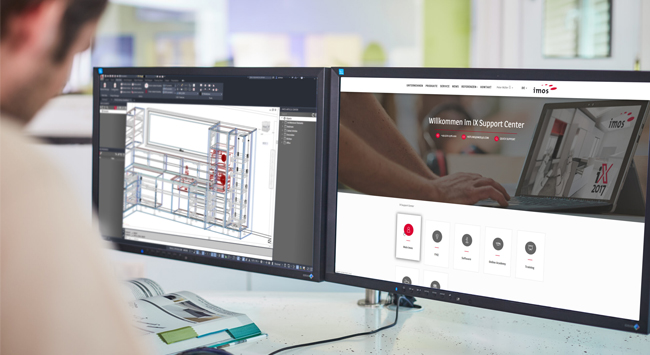Friday, September 1, 2023

Technology has evolved into an essential instrument for increasing production and efficiency in the woodworking industry today, so, it is pretty evident that “change is constant” . The combination of computer-aided design (CAD) and computer-aided manufacturing (CAM) technologies is one such technical advancement that has completely transformed the woodworking sector. Also, the industry is getting privileged by adopting new inventions. The first step in utilising the technology to improve the design and production efficiency of your manufactured items is understanding what CAD and CAM are, the advantages of utilising them, and how to select the best solution for your purposes.
Understanding CAD and CAM
Computer-Aided Design is a digital technology that enables woodworkers to create detailed 2D and 3D models of their projects. Using CAD software, designers can conceptualize and visualize their ideas, incorporating precise measurements, intricate joinery, and complex shapes with ease. CAD provides a platform for accurate prototyping, eliminating potential errors and minimizing material waste. On the other hand, Computer-Aided Manufacturing focuses on the automated production process. CAM software takes the design data generated by CAD and translates it into machine-readable instructions. This allows woodworking machines, such as CNC routers, to precisely cut, shape, and carve wooden components. By automating the manufacturing process, CAM reduces manual labor, enhances precision,
and accelerates production timelines.
There are many advantages to using CAD/CAM in your woodworking business, such as:
Enhanced Design Capabilities: CAD empowers woodworkers to experiment with intricate designs, test multiple variations, and visualize the final product before committing to physical construction. It allows for precise measurements, accurate joinery, and detailed renderings, thereby elevating the overall quality of woodworking projects.
Improved Efficiency and Accuracy: The integration of CAD/CAM solutions eliminates the need
for manual drafting and measurement, reducing human errors and material waste. With
automated CAM processes, woodworkers can achieve consistent results across multiple
projects, ensuring the highest level of precision in every cut, carve, or shaping task.
Time and Cost Savings: CAD/CAM technology enables woodworkers to optimize their production processes. By streamlining design iterations, automating cutting operations, and reducing rework, businesses can complete projects faster, resulting in increased productivity and reduced labor costs.
Increased Customization and Flexibility: CAD/CAM solutions provide woodworkers with the flexibility to make design modifications on the fly. Whether it’s adjusting dimensions, altering joinery techniques, or incorporating intricate detailing, CAD/CAM empowers woodworkers to meet the unique demands of their clients, allowing for greater customization and customer satisfaction.

Factors to Consider when Shopping for the Right CAD/CAM Solution:
Finding the right CAD/CAM solution for your woodworking company is crucial for leveraging its benefits effectively. Here are a few key considerations:
Compatibility: Ensure that the CAD/CAM software you choose is compatible with your existing design and manufacturing processes. Look for solutions that seamlessly integrate with popular design software and can generate machine-readable instructions for your specific woodworking machinery.
Ease of Use: Evaluate the user interface and intuitiveness of the software. A user-friendly CAD/CAM solution will help your team adapt quickly and maximize productivity. Consider the availability of tutorials, training resources, and customer support to facilitate a smooth transition.
Scalability and Upgradability: Select a CAD/CAM system that can accommodate your current needs while offering scalability for future growth. As your woodworking business expands, you may require additional features, capabilities, or the ability to integrate with other software tools.
Cost Considerations: Assess the overall cost of the CAD/CAM solution, including licensing fees, maintenance, and training expenses. Compare different options to find a balance between affordability and the desired functionality.
The Future of Design and Production with CAD/CAM
CAD/CAM solutions have become invaluable assets for woodworking companies, providing enhanced design capabilities, increased efficiency, time and cost savings, and improved customization. By carefully selecting the right CAD/CAM solution, woodworkers can elevate their manufacturing processes, streamline operations, and deliver exceptional woodworking projects to a competitive market.
Investing in CAD/CAM technology demonstrates a commitment to innovation, positioning woodworking businesses at the forefront of the industry’s evolution, while unlocking new opportunities for growth and success.
Source: STILES Machinery
Author : Ben Williams, Digital Solutions Sales Manager at Stiles Machinery
Tags: CAD software, CAD/CAM, CAM solutions, future design and production, stiles machinery, woodworking industry